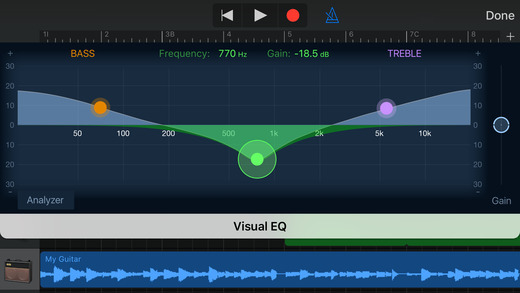

- #Upgrade garageband to logic pro pro#
- #Upgrade garageband to logic pro software#
- #Upgrade garageband to logic pro professional#
- #Upgrade garageband to logic pro free#
By ganging together tracks into a folder stack you can mute, solo, and control the volume of all the ganged tracks with a single set of controls. If you like, you can even add a notes field below each fader.
#Upgrade garageband to logic pro pro#
In Logic Pro X, just choose Window > Open Mixer (Command-2) and you see the almost real deal-a virtual mixing board that includes, among other things, audio and MIDI effects inserts, an EQ view, sends, a pan knob, volume slider, and mute and solo buttons. Rather, to the left of each track you see a volume slider, pan knob, mute and solo buttons, and-if you switch on automation controls-a pop-up window for automating volume and pan and making some adjustments to GarageBand’s smart controls. If you visit a recording studio you’ll generally see the engineer sitting in front of a large mixing console, complete with buttons, knobs, and faders. The previous contents of the track will remain in the last chosen time signature but any material that appears after you’ve made the change will be in the new meter. The easiest is to move the playhead to the beginning of a measure and then adjust the time signature settings in the LCD-change it from 4/4 to 3/4, for example. Logic Pro X allows you to pack as many time signatures as you like into a single project and it offers several ways to do it. Unlike with GarageBand, you can mix time signatures in Logic Pro X. Although you can change the meter any time you like in a GarageBand project, when you do, the meter for the entire project changes rather than for just a selected portion of it. This is fine unless your project contains multiple time signatures-4/4 for the first 16 measures, a couple of 3/4 measures, and then back to 4/4.

#Upgrade garageband to logic pro software#
The time signature you choose affects not only the feel of the song but also the metronome click you hear, how music notation is presented in the Score editor for software instrument tracks, and the kind of groove played in the Drummer track. When you first create a GarageBand project, you choose its time signature-4/4, 3/4, 6/8, 5/4, and so on.
#Upgrade garageband to logic pro professional#
Fortunately, all these features can be found in Apple’s $200 professional digital audio workstation (DAW) app,

Those seeking more professional productions may find they want a more extensive collection of tools-the ability to use multiple time-signatures within a single project, an expansive mixing console, track grouping, support for control surfaces, the opportunity to assign any effect to any track, an advanced score editor, pitch tweaking, and virtual instrument editing. It supports multi-instrument input (with a compatible audio interface), has a solid collection of virtual instruments, enough loops to piece together a track that grooves, amps and pedalboard effects for both guitar and bass players, and mixing tools capable enough to help you produce a great demo.īut its talents aren’t unlimited.
#Upgrade garageband to logic pro free#
GarageBand 10 is free for the basic version and for a measly $5 you can expand its content to include 200 sounds, 2,000 loops, 15 drummers, and 40 guitar and piano Basic Lessons. Once the GarageBand project is loaded into Logic Pro, you can freely change parts, mixing levels, and plug-in parameters as in any Logic Pro project.If you’re a musician who also owns a Mac, chances are that you’ve spent hours playing with (and playing into) GarageBand. They are replaced by the PlatinumVerb and Echo on busses 1 and 2. The two bus effects of GarageBand (Reverb and Echo) are also translated when opened in Logic Pro. The channel strip settings of GarageBand translate 1:1 into Logic Pro-with the nice exception that you can now access the individual plug-ins that are inserted into a GarageBand channel strip.Īll channel strip objects are routed to Stereo Out (default stereo output pair), and immediately play out according to the Stereo Output preference chosen in the Logic Pro > Preferences > Audio > I/O Assignments > Output pane. Any mixing data and effects (plus their settings) used by software instruments or Apple Loops–based tracks in GarageBand are also imported into Logic Pro. GarageBand instruments are automatically installed with Logic Pro. Software instrument parts are played by GarageBand instruments in Logic Pro. The initial key signature is set in accordance with the project key of the GarageBand project.

The project uses the tempo of the GarageBand project. Logic Pro automatically creates the required number, and type, of tracks to mirror those used in the GarageBand project. The GarageBand project translates 1:1 into Logic Pro: You can open a GarageBand project in Logic Pro just as you would open a Logic Pro project.


 0 kommentar(er)
0 kommentar(er)
